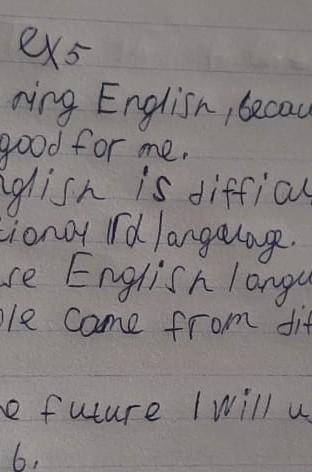
JFK Speech, p. 189
Look at the following sections and determine what part of the argument is present in that section.
Ex. Lines 1-30, this section has Kennedy introducing his purpose.
a. Lines 31-78:
b. Lines 79-104:
Summarize the claim suggested in the following sections:
a. Lines 31-78:
b. Lines: 79-104

Answers: 1


Another question on English

English, 21.06.2019 22:30
1) earth's crust is made up of relatively rigid plates that ride atop earth's hot, semiliquid mantle. (2) the plates are called tectonic because they're in constant motion. (3) they can move because earth's mantle is a very hot and semiliquid fluid called magma. (4) volcanoes are a result of magma rising up or erupting through a plate, particularly where plate boundaries are moving against each other. (5) also, when plates slide against each other, causing friction along adjacent plate boundaries, earthquakes frequently occur. (6) therefore, we often find volcanoes and earthquakes along plate boundaries. (7) plates may also collide. (8) when that happens, mountain ranges are formed. (9) for example, the collision of the plate carrying the indian subcontinent created the himalayan mountains when it collided with the asian plate. which statement about this paragraph is accurate?
Answers: 3

English, 22.06.2019 00:00
The overwhelming majority of the peoples and nations of the world today want to live in peace
Answers: 1

English, 22.06.2019 04:40
Adapt the speech you delivered in lesson 2 to an audience of professionals, teachers, and parents. the audience expects a more formal delivery. your listeners also expect you to use media such as images and audio to make your speech more convincing and easier to understand. your assignment should include the following elements: -at least four sources to back up your ideas -media elements to illustrate your ideas -changes to both the style and content of the speech to make it more appropriate to the audience -citations that follow mla guidelines as you revise your presentation, research and cite at least four sources. at least two of these sources must provide supporting evidence, such as charts and graphs or quotes from newspapers or other credible sources. the other two sources can provide material to grab the audience's attention — for example, photos that your audience visualize what you're talking about or music that sets the mood. you can also create original images, but these will not count as sources. here are some types of media that you may use to either show evidence or move the audience: quotes tables, charts, and graphs images video audio (including music) mix up the types of media you use so that no medium is used more than twice. take care that all your sources contribute to your speech in an obvious way. they should either back up what you're saying or make your ideas easier for your audience to understand logically or emotionally. avoid visual aids that are off topic or confusing. ask yourself these questions as you revise: am i still fulfilling the requirements of the speech i gave in lesson 2? is my speech still about a theme in franklin roosevelt's four freedoms speech? do i connect that theme to my own life and to a current issue? are my sources credible and relevant? will they convince an audience of parents, teachers, and professionals? do my media elements enhance my speech? do they set the mood, explain something difficult, or offer convincing proof? do i avoid media elements that are more distracting than ? did i cite my sources according to mla guidelines? did i check my works-cited page against sample works-cited pages to make sure it's correct?
Answers: 2

English, 22.06.2019 08:00
What is the missing statement in step 3 of the proof? given: z1 is complementary to 22. 22 is complementary to 23. prove: m_1 = m23 m21 = m2 m2 1 + m22 = 90° m22 = m23 m22 + m23 = 180° 2 statements 21 is comp. to 22 2. 22 is comp. to 23 3. ? 4. mz1 - 90°-m22 m22+m23 = 90° 6. m23 = 90°-m22 7 m21 - m23 reasons 1. given 2. given 3. def of comp. zs 4. subtr equality prop. 5. def. of comp. 25 6 subtr. equality prop 17. trans. prop. vo
Answers: 1
You know the right answer?
JFK Speech, p. 189
Look at the following sections and determine what part of the argument is presen...
Questions

Mathematics, 29.10.2019 17:31

Mathematics, 29.10.2019 17:31

History, 29.10.2019 17:31

Mathematics, 29.10.2019 17:31

Advanced Placement (AP), 29.10.2019 17:31

Chemistry, 29.10.2019 17:31




Chemistry, 29.10.2019 17:31


Mathematics, 29.10.2019 17:31

Social Studies, 29.10.2019 17:31

Mathematics, 29.10.2019 17:31

Physics, 29.10.2019 17:31

Social Studies, 29.10.2019 17:31

Mathematics, 29.10.2019 17:31

English, 29.10.2019 17:31

Mathematics, 29.10.2019 17:31

Physics, 29.10.2019 17:31




